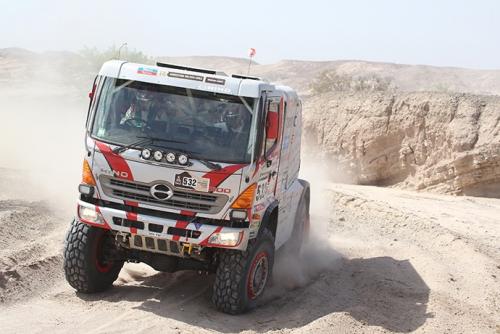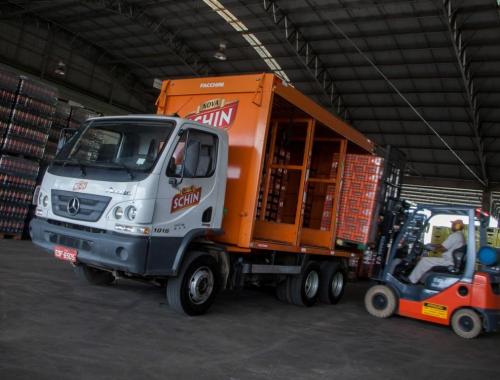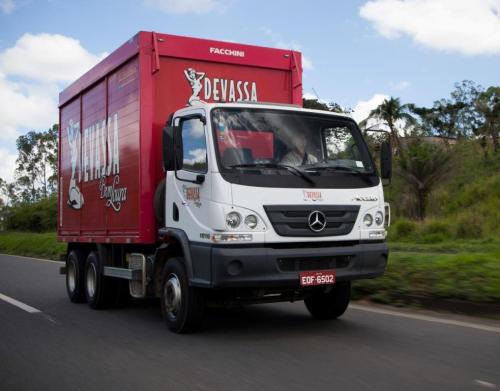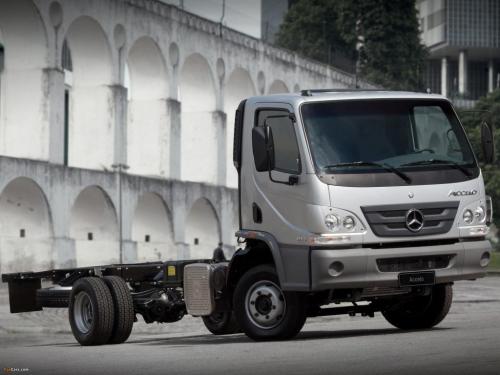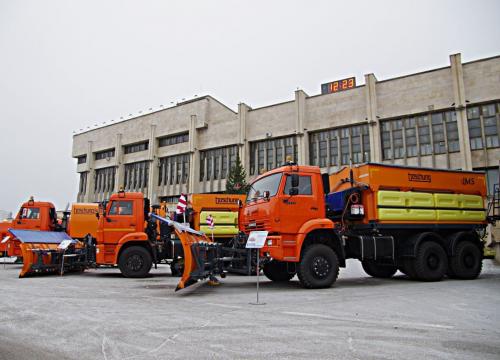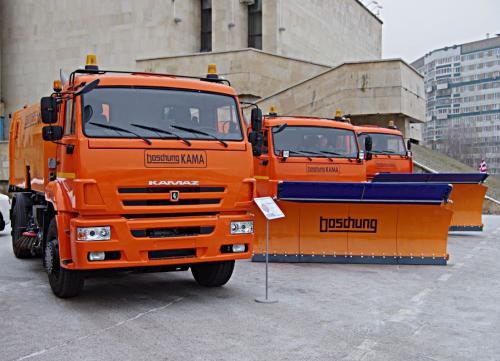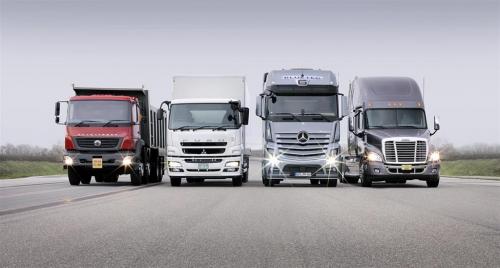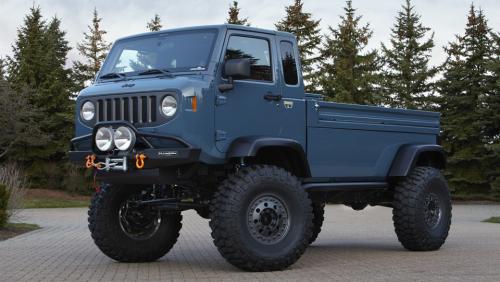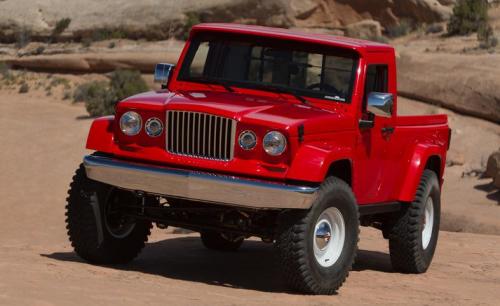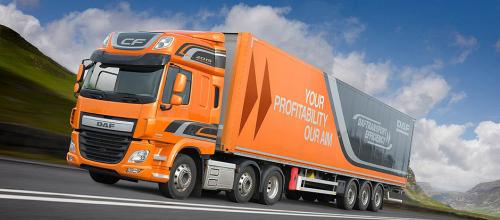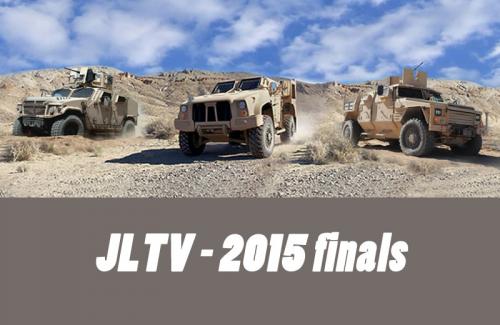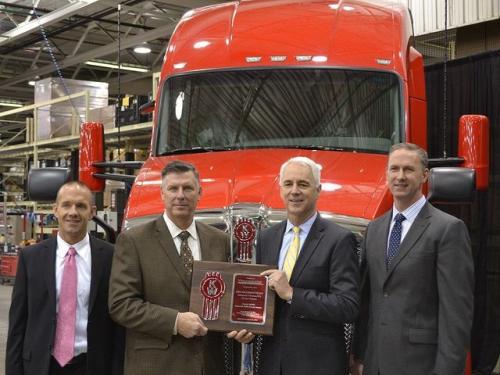
kscarbel2
Moderator-
Posts
18,538 -
Joined
-
Days Won
112
Content Type
Profiles
Forums
Gallery
Events
Blogs
BMT Wiki
Collections
Store
Everything posted by kscarbel2
-
Press Release / January 4, 2015 The world’s most experienced truck rally team has been refining its vehicles through testing and competition this year with the aim of claiming its sixth successive class victory at the 2015 Dakar Rally. 2015 also marks 25 years since Hino became the first Japanese manufacturer to enter the rally in 1991. Hino Team Sugawara is competing beyond the under 10-litre class, in which it claimed first and second places at Dakar in 2014. The team’s trucks, both loosely based on the medium duty Hino 500 Series, have completed a shake-down at Rally Mongolia in preparation for Dakar 2015. The team has also logged numerous hours and kilometers in both trucks at Hino’s proving ground at Gozenyama in Japan. The team line-up for 2015 consists of father and son drivers Yoshimasa and Teruhito Sugawara, navigators Yoko Wakabayashi and Hiroyuki Sugiura, a carefully selected team of Hino dealer mechanics and support personnel. Truck No. 2’s 8.9-litre engine – which used Hino’s direct injection system for the first time to take second position in the under 10-litre class in 2014 – will be carried over. The same engine and injection system will be added to a newly built truck No. 1. For Dakar 2015 Hino Team Sugawara has developed a completely new suspension system to best harness the added power that the 8.9-litre engine brings. The new suspension uses alternative leaf springs with softer settings and adds a torque rod to better locate the axles. Both drivers have praised its ability to deliver power to the ground. Teruhito Sugawara echoed the team’s confidence when talking about their expectations for 2015. "In our next race, it goes without saying that we will be aiming for our sixth straight championship in the Under 10-litre Class,” Teruhito said. “But in addition, we will also be aiming to finish with high rankings in the overall Trucks category to let the world know Hino Japan is a force to be reckoned with." The 2015 Dakar Rally will begin on January 4 at the Tecnopolis exhibition centre in north-east Buenos Aires, Argentina. Competitors who make it through all stages of the rally (which covers 9,000 kilometers across Argentina, Chile and Bolivia) will finish back in Buenos Aires on January 17. Hino Dakar race truck specifications: http://www.hino-global.com/dakar/team_sugawara/racing_trucks.html Hino 2015 Dakar Rally Website: http://www.hino-global.com/dakar/ 2015 Dakar Rally website: http://www.dakar.com/index_DAKus.html .
-
Army, Marines invite proposals for a new light combat vehicle
kscarbel2 replied to kscarbel2's topic in Trucking News
BAE is Lockheed Martin's partner. I'm not impressed with any of these trucks, particularly the hideous looking Oshkosh L-ATV proposal. In 2012, Navistar lost the chance to participate with its Saratoga concept (BAE was also Navistar's partner). -
Details on new Iveco Acco model revealed Prime Mover Magazine / January 2, 2015 Iveco Trucks Australia has introduced an upgraded version of the Acco in December. Prime Mover now had a closer look at the new model. According to Iveco, the latest generation of the Acco takes the 40-year-old concept to a new level in order to demonstrate it is still relevant for Australia’s vocational market. Built in Dandenong, about 85 percent of the new Acco’s componentry is Australian-sourced, Iveco said at the December launch. As a result, the Acco can be modified on the production line to suit the truck’s intended application and bolt holes and other fastening points can be customized, as can the positioning of auxiliary components. The latest upgrades are the result of a multimillion dollar planning and research process that took over two years and involved a team of more than 10 of the 40 full-time engineers based at Iveco’s Dandenong facility. One key enhancement is the introduction of Electronic Stability Control (ESC) to the 5.1m wheelbase 8x4 Agitator variant. While ESC is planned for a model-wide roll-out in the future, initial adoption on the agitator spec cab-chassis was seen as a priority given the high centre of gravity nature of agitator work. The Acco ESC system incorporates a steering sensor on the steering wheel and a chassis-mounted yaw sensor which both combine to assist in keeping all wheels firmly planted on the road in an emergency turning or swerve situation. Power and torque for the latest Acco’s remains unchanged from the previous model and are delivered by a turbocharged Cummins 8.9-litre, 6-cylinder Euro V engine which employs SCR technology and is available in three power ratings. Meanwhile, the new Acco cabin is a full-steel construction with panels manufactured on the huge presses in the Dandenong factory to create one of the toughest cabs available and is ECR29 certified. The judicious use of components from other models in the Iveco stable has provided the new Acco with a contemporary image – particularly when viewed from the front. The exterior of the cabin has been modernised and the changes represent the most visually extensive in the Acco’s history. The new model adopted the front flap section from the Stralis and a revised bumper as used on Iveco’s heavy-duty Trakker off-road truck. Complementing the appearance are new side deflectors, headlights sourced from the Stralis and bumper-encased indicators.
-
Developed specifically to meet the needs of the beverage industry in Brazil, the 8 to 10 metric ton Mercedes-Benz Accelo range offers a unique 6x2 configuration for greater productivity. The Accelo 6x2 is designed to compete with Volkswagen’s Delivery 10.160 Plus 6x2. The optional 6x2 spec raises the Accelo 1016’s gross vehicle weight rating to 13,000 kg (28,660lb), and payload capacity to 9,000kg (19,842lb). The Accelo 1016 6x2 is the only VUC* compliant truck capable of transporting six tall 1,250kg (2,756lb) beverage pallets. Larger trip loads boosts productivity 20 percent for greater profitability. Power is supplied by a Euro-5 (EPA2007) 4.8-liter four-cylinder Mercedes-Benz OM924LA rated at 156 horsepower (@2,200rpm) and 610 N.m of torque (@1,200-1,600rpm). Known for their low operating cost, Mercedes-Benz engines with BlueTec 5 exhaust after-treatment technology are up to 6% more economical than competitive engines. A 6-speed Mercedes-Benz G-56 transmits the power to a 4.30 ratio drive axle with a 6.4 metric ton rating (14,110lb). Tires are size 235/75R17.5. Equipped with a 4.4 meter wheelbase, the 4x2 Accelo is designed to accommodate a 6.6 meter body, while the 6x2 variant can be fitted with bodies up to 8.2 meters in length. With 20 cubic meters of cargo capacity, the Accelo carries the equivalent of two Asian light trucks fitted with 3 meter long bodies. And the payload capacity of the 6x2 variant can replace up to five of those trucks, resulting in fewer trips to deliver the same amount of cargo for higher productivity and reduced customer costs. The Accelo’s compact dimensions and tight turning radius make it highly maneuverable on narrow, traffic-congested streets, the perfect truck for pick-up and delivery in large cities. * VUC (veiculo urbano de carga, or urban cargo vehicle), refers to a fast-growing new class of 6,000kg to 10,000kg GVW delivery trucks designed to operate in Brazil's congested urban areas. The truck class is restricted to dimensional limits of 6.3 meters in length and 2.2 meters in width. .
-
Press Release / November 27, 2014 Boschung-KamAZ, a joint venture between Russian truckmaker KamAZ and Switzerland-based snow removal equipment manufacturer Boschung Holding AG, displayed its latest offerings this week in Naberezhnye Chelny. The joint venture was established in 2011. http://www.boschung.com/en/ .
-
Press Release / December 29, 2014 Stuttgart – Daimler Trucks will sell nearly 500,000 trucks in 2014. Despite challenging market conditions, the world's leading manufacturer of commercial vehicles succeeded in increasing deliveries to 445,300 units in the first eleven months of 2014, an increase by three percent over the same period last year.Based on first December figures, Daimler Trucks expects to finish 2014 with considerably positive sales growth reaching nearly 500,000 units. Final worldwide sales figures will be announced at Daimler’s annual press conference next February. In 2013, Daimler Trucks sold 484,200 trucks of the Mercedes-Benz, FUSO, Freightliner, Western Star, Thomas Built Buses and BharatBenz brands. "Our intense efforts in all regions are paying dividends. Despite many economic challenges in some key markets, we can look back on 12 successful months. With almost 500,000 trucks sold, we are already coming very close to our target envisaged for 2015," said Dr. Wolfgang Bernhard, Member of the Board of Management of Daimler AG responsible for Daimler Trucks & Buses. For commercial vehicles, 2014 was dominated by developments that varied widely by regions. Weak economic prospects but also political uncertainties put a strain on the market development in Latin America. In Europe, sales were impacted by the lack of dynamic economic development in addition to the introduction of the new Euro VI emissions standards and the difficult political situation in Eastern Europe. The situation is very different in North America and Japan: In these markets Daimler benefited from the strong overall local business environment for commercial vehicles. "We scored points with our strong products. With a strong sales team and vehicles perfectly tailored to the particular customer needs, we managed to increase our market positions in many key regions," said Bernhard. One major reason for the high market acceptance for trucks from Daimler is the extremely competitive total cost of ownership (TCO) of the vehicles, which is the most important argument for buyers of trucks as a capital good. Enhanced efficiency for the good of the customer is paramount in all regions, for all brands and for all vehicle models. This is especially true for the Actros certified to Euro VI standards in Europe, for the current NAFTA bestseller, the Freightliner Cascadia Evolution, and for the FUSO Super Great V in Japan. All three models are pioneers in terms of fuel efficiency. About the prospects for the coming year Bernhard said: "With our global presence, our technological leadership and our intelligent platform strategy we are well prepared to react swiftly and appropriately to unpredictabilities in the economic environment. That is why we at Daimler Trucks will continue to work steadily on further expanding our position as the world's leading truck manufacturer in 2015." Bernhard does not expect a recovery in demand for trucks in emerging markets next year, despite low fuel prices. "In the economically challenging markets we continue to see risks," Bernhard said about expectations for the truck market in 2015. We will not see a jump in demand in Brazil, the risks outweigh the opportunities. "I do not believe that short-term changes in the spot (fuel) prices will change the buying habits of our clients," says Bernhard, adding that so far low fuel prices had not boosted sales. Strong sales growth at Daimler Trucks North America (DTNA) The growth of Daimler Trucks in 2014 was driven in particular by the positive development of sales in the NAFTA region and in Japan. In the NAFTA region, Daimler Trucks was again by far the market leader in the weight classes 6-8 with a market share of 37.3 percent (previous year: 38.8 percent). Sales in the first eleven months climbed to a record 147,200 vehicles (previous year: 124,000 vehicles). This corresponds to an increase by 19 percent over the same period last year. In October, DTNA had the highest monthly order intake ever recorded by a manufacturer in the US truck business with about 31,300 orders received. Among others, strong momentum for order intake was provided by the Freightliner Cascadia Evolution, which impresses with the lowest fuel consumption in its segment and thus with a highly competitive total cost of ownership. Customers in North America increasingly value the advantage of an integrated powertrain from a single source like the one found in the Cascadia Evolution: the engine, axles and transmission all come from Daimler Trucks. The components are perfectly synchronized to each other and consequently increase fuel efficiency. Significant sales increase in Japan Sales in Asia developed positively overall in the past year. In Japan, sales in the first eleven months increased by 16 percent to 39,900 units (previous year: 34,400 units). In the total Japanese market, Daimler Trucks was thus able to defend its position with the FUSO brand and reached a market share of 20.3 (previous year: 20.2) percent. Deliveries of the new FUSO Super Great V heavy-duty truck started in September. Thanks to its optimized major components, it offers even further reduced fuel consumption. As a result, all models of the Super Great V already outperform the fuel efficiency standards (FES) going into effect in Japan in 2015 by up to five percent. In Indonesia, sales dropped to 51,400 (previous year: 57,400) units due to the strong downturn in the market compared with the same period last year. Nevertheless, Daimler Trucks increased its market share to 47.2 (previous year: 46.7) percent. In the course of the product initiative, FUSO launched the new FI and FJ model series (MDT, HDT) in Indonesia. These vehicles are manufactured in India by the wholly owned Daimler subsidiary Daimler India Commercial Vehicles Pvt. Ltd. (DICV) as part of the group's Asia Business model. In December, DICV had reason to celebrate an important production milestone: The 20,000th locally produced truck of the BharatBenz and FUSO brands rolled off the assembly line in Chennai (Southwestern India). In India, five more models of the BharatBenz brand were launched over the course of the year. Sales in the first eleven months climbed by 61 percent to 9,700 (previous year: 6,000) units. The new, attractive product range of the young BharatBenz brand is now sold by a network of around 80 dealerships. The expansion of the sales network continues as planned. At the same time, the acceptance of the brand among Indian customers keeps growing: less than two years after the start of deliveries, BharatBenz has conquered third place in the market for heavy-duty trucks. Market position in Western Europe further expanded The fact that the Mercedes-Benz products are excellently received is evident in the market share in the medium-duty and heavy-duty segment in Western Europe: Mercedes-Benz succeeded in slightly increasing its market share to 24.6 (previous year: 24.2) percent in a difficult market environment. Sales in the first eleven months totaled 50,500 units, thus remaining below the previous year's level (previous year: 56,800 vehicles). In addition to early purchases due to the introduction of Euro VI emission standards, this was also caused by the overall difficult economic development. In Germany, sales likewise decreased to 25,500 (previous year: 28,200) units as the result of the market climate. With a market share of 40.0 (previous year: 40.4) percent the company retained its leading position in the domestic market. In Turkey, sales climbed to an eleven-month record level of 18,900 (previous year: 17,100) units. The market share slightly dropped to 48.9 (previous year: 49.7) percent. The local Mercedes-Benz manufacturing plant in Aksaray was able to celebrate a special anniversary a few weeks ago: the 200,000th Mercedes-Benz truck made in Turkey rolled of its assembly lines. Market share gains in Brazil In Latin America, sales dropped considerably due to a lack of dynamic economic development. The key market Brazil was rather strongly impacted: sales in Brazil decreased to 31,300 (previous year: 37,300) units. Uncertainty prior to the elections in October, weak economic development and uncertainty about the coming structure of government financial incentives resulted in hesitant buying behavior. Nonetheless, Daimler Trucks succeeded in significantly expanding its market share to 26.0 (previous year: 24.4) percent in this difficult market environment. To remain competitive in this market of strategic importance and be able to react flexibly to changes in the market, Daimler Trucks will invest well over 500 million euros in the production facilities, products and locations around Sugarloaf Mountain through 2018. In China, Daimler Trucks is well on its way to sell roughly as many trucks of the Auman brand as in 2013 (previous year: 103,000) in a slightly declining total market. The first eleven months of this year saw sales of 89,800 Auman trucks (previous year: 94,000). These vehicles are manufactured by the Beijing Foton Daimler Automotive Co. Ltd. (BFDA) joint venture, in which Daimler and its Chinese partner Foton each hold 50 percent of the shares. Highlight of the year: Mercedes-Benz Future Truck 2025 The highlight of 2014 at Daimler Trucks was the Mercedes-Benz Future Truck 2025. The autonomously driving truck was presented at the 65th International Motor Show for Commercial Vehicles in Hanover in September. The Future Truck 2025 protects resources, reduces all types of emissions, guarantees maximum traffic safety and increases connectivity in road traffic. Radar sensors and camera technology make it possible for the Future Truck 2025 to drive autonomously independent from other vehicles or control centers. Mercedes-Benz combines this technology within the highly intelligent "Highway Pilot" system, a system similar to an autopilot in an aircraft. "The Mercedes-Benz Future Truck 2025 epitomizes efficiency, safety and connectivity like no other truck. Consequently, it provides relevant answers to the future challenges in road freight transport. That is why I am convinced that this technology will open up new business prospects for Daimler Trucks in the future," said Bernhard..
-
MH question
kscarbel2 replied to ws721's topic in Antique and Classic Mack Trucks General Discussion
Exactly, the model number for an MH indicated the engine supplier (Mack, Caterpillar, Cummins or Detroit Diesel), but not the specific engine model. -
Mack Cruise-Liners, and Hayward-produced Super-Liners, used a 32MK39306A aluminum battery box cover (Note the 5-digit Mack Western part number, unlike Mack part numbers for east coast models). Unlike other Mack battery box covers, these had a locating pin at the front bottom of the cover. If I recall correctly, the polished version was 32MK39306AP3.
-
The Allentown-produced Mack F-model was offered with black painted steel or chrome steel battery box covers, but never aluminum. However having said that, the MH/RWI aluminum battery box covers (32MK4195M) can be directly fitted to F and R/U/DM models. If you want bright finish, then 32MK4195M2.
-
Car & Driver / August 2012 At first glance, the Jeep Mighty FC concept defies any preconceived notions you may have regarding scale and balance. Alarmingly front-heavy and precipitously perched, it runs roughshod over generally accepted tenets of vehicle design. When the original Jeep FC (Forward Control) sprang forth from the mind of industrial designer Brooks Stevens (the same guy who designed the classic Miller Brewing logo!) back in the 1950s, its mission was not off-road prowess but improved space efficiency and versatility. It placed the occupants above and in front of—rather than behind—the powertrain. The new Mighty FC concept performs the same packaging trick, and so it retains the family visage. As Mark Allen, head of Jeep Design and the prime instigator behind the Mighty FC, puts it: “As soon as we unveiled it in Moab (at the annual Easter Jeep Safari), everyone recognized it, which amazed us. We thought it would have a fan base of about five people. As it sits here, it’s somewhere between an engineering mule and a static concept vehicle.” The FC’s cab was hewn from the two-door Wrangler, retaining the windshield, A-pillars, and doors; the roof is from Mopar’s JK-8 pickup kit. To enter, the long-limbed and nimble may find it easiest to simply scale one of the nearly 40-inch-high tires; the vertically challenged and aged may prefer to climb upon the rock sliders (repurposed Jeep four-door rock rails, cribbed directly from the Mopar catalog) and shimmy over the tire. The interior consists largely of stock Wrangler items, including the dash, steering wheel, and shifter. The seats are wrapped in plaid upholstery partially stitched up from a Burton snowboard bag, the tags and zippers left intact. Given the obvious volumetric peculiarities of the cab-over configuration, the driving position is surprisingly comfortable. A Wrangler Rubicon’s 3.6-liter V-6 engine and automatic transmission both remain virtually stock. The chassis came from the same Wrangler, albeit lengthened to provide a 117.0-inch wheelbase. Post-inspection, we are set loose on the Jeep trails located deep in the bowels of Chrysler’s Chelsea Proving Grounds. First up: a several-hundred-foot rock staircase that the FC conquers almost effortlessly in both directions; there’s some mild wheel hop during the climb, but the descent is graceful. Next we confront a downhill with staggered whoops designed to test axle articulation. It’s here that the ass-over-axle seating position makes itself felt, providing a sensation dynamically opposed to everything your author’s inner ear has learned about vehicular poise. The ground comes up directly in front of us; making a mistake here pretty much guarantees that our feet and ankles will spend the next few months encased in plaster. “The portal axles are the real story here,” says Allen. “They provide about 5.5 inches of lift due to their design, which uses gears in each wheel hub to raise the main axle tube above the wheel centers.” Aside from the 39.5-inch Krawler tires mounted on 17-inch Hutchinson bead-lock wheels, there isn’t a lot of additional suspension lift. It’s got coil-over shocks with remote reservoirs and TeraFlex control arms, but otherwise the chassis is stock. It weighs about 6500 pounds all in, with a heavy bias toward the front. Approaching a boulder-strewn uphill that would stymie even experienced wheelers, we lock the front and rear diffs and effortlessly idle up the incline, occasionally lifting a tire into the air. So the FC works even better than it looks—a rare trait for a concept vehicle. If Jeep puts it into production (the FC has a small chance), we bet there’d be more than five people lining up for it. http://www.caranddriver.com/reviews/jeep-mighty-fc-concept-first-drive-review .
- 1 reply
-
- 2
-

-
Car & Driver / May 2012 When all else fails, mine your past. At times, this seems to be the only strategy Chrysler knows how to follow anymore. But for all the Chargers, Challengers, and Darts trading on their namesakes’ legacies, the Jeep division’s products have arguably walked the straightest path from the brand’s inception to its current showroom offerings. Take the Wrangler, for instance: ladder frame, stick axles, and coil springs. You can find more-complex riding lawnmowers. Because of the seemingly eternal primordial state in which the Wrangler exists—its recent interior redo notwithstanding—Jeep designers have an incredibly versatile and cost-effective rolling canvas on which to base concept rigs. Taking full advantage of the situation, they’ve made a point of annually churning out a passel of concepts surrounding the Easter Jeep Safari in Moab, hoping to keep enthusiast fires stoked and grab a few headlines in the process. It’s worked. Recent years have yielded the stripped-down Wrangler Porkchop and the military-style Nukizer 715. There also was the Lower Forty, which we pitted against a donkey in a comparison test. And last year Jeep dropped the JK-8 on us, a custom pickup truck that recalled Jeep’s production Scrambler quasi-pickup of 30 years earlier. For 2012, Jeep checked in with a half-dozen or so new projects. Wedged between the adolescent-fantasy-fueled Mighty FC and Hemi-powered Wrangler Apache was the mild-mannered Jeep J-12 concept you see here that we recently sampled at Chrysler’s proving ground in Chelsea, Michigan. “If there was a guiding principal or theme behind the J-12 concept, it was grandpa’s fishing truck,” says Kyle Evans, the J-12’s designer. “The color, the logos, the grille—these things evoke very specific memories for people. When we were out in Moab last month, virtually everyone had a story about a personal experience with a Jeep J-series.” When the time came to begin constructing the actual J-12 concept, Evans didn’t have to look far. As a senior designer in the Jeep studio, he has unparalleled access to the corporate parts bin and, by association, to the extensive collection of performance and appearance parts that trade under the Mopar brand name. “Not to mention some pretty select Dumpsters,” laughs Evans, a sentiment echoed by fellow Jeep enthusiast Mark Allen, who just happens to be the head of Jeep Design. (Allen would later lead us away from the off-road area—it’s used by Jeep to help certify its vehicles’ Trail Rated badging—by drifting his Grand Cherokee SRT8 around long, sweeping gravel-strewn turns. Starting with a four-door Wrangler Sahara, Evans and the team at the Mopar Underground workshop first stretched the chassis by 18 inches, long enough to facilitate a six-foot bed. Two complete off-the-shelf Mopar JK-8 pickup-bed conversion kits were utilized to fabricate the cargo box, which has just enough room underneath to stow a full-size spare tire. The cab was modified slightly in pursuit of payload inches; by creating a custom bench seat, the team was able to maintain legroom. The tailgate and the fender flares are custom pieces. Special care was taken to include the brow across the top of the windshield that disappeared on production-model Jeeps around 1980. “Collectors refer to their trucks as either pre- or post-brow J-series. We couldn’t ignore it,” says Evans. But more than anything else, it’s the near-faithful reproduction of a late-’60s Jeep J-series front clip that intrigues. Aside from the chrome-plated front bumper and “rhino style” grille, the entire retro-look hood, fenders, and fascia are constructed of carbon fiber and are essentially installed directly over the Wrangler’s existing substructure without modification. It was all designed from the git-go to use all the Wrangler’s original mounting flanges and bolts, and Evans claims he could take the entire front end off and replace it with the stock Wrangler pieces in a half-hour or so. “Yeah, maybe Mopar will want to do something with this front end,” says Evans, his voice trailing off in calculated indifference, looking for a reaction. We offer none, but inside we’re saying to ourselves, “Good God, man! Make it! Sell it! The planets will align, and all will be right with the world again!” No exterior detail has escaped scrutiny: The dog-dish hubcaps wear Kaiser-era Jeep logos, and the tailgate lettering and the fender badges are composites created from various Jeep fonts used throughout the years. The mechanicals found underneath the stylish exterior are a fairly even mix of factory Wrangler and aftermarket parts. A stock 285-hp, 3.6-liter Pentastar V-6 and five-speed automatic transmission funnel torque to a pair of ARB air-locker-equipped Dynatrac axles (D-44 front, D-60 rear) via a set of Tom Woods custom driveshafts. Mopar’s three-inch lift kit gives the classic 36-inch bias-ply tires plenty of room to breathe, and Teraflex anti-roll bars keep body motions under control in more civilized settings, although they were disconnected for the duration of our drive. Creating the tall, narrow period-correct tires required a clever melding of new and old techniques. Engineers started with the worn carcasses of some appropriately sized tires, and the process involved “remolding” the tires (in a process similar to the one used to retread semi-trailer tires) with a pseudo-knobby tread pattern, resulting in a set of steel-belted, bias-ply period-correct rubber that would fit the J-12’s comparatively dinky 16-inch steel wheels. The effect this attention to detail has on the finished product cannot be underestimated; any effort to adapt currently available rolling stock to the J-12 concept would likely have stood in stark contrast to the meticulously designed bodywork. Mix old with old—or at least old style—we say. Settling in to the J-12’s red, white, and plaid cabin is a bit like returning to a cottage you haven’t visited in a decade or so: vaguely familiar and welcoming, except the cottage also would smell like tackle boxes and moldy life vests. The split bench seat was constructed from modified Wrangler buckets and covered in white upholstery with plaid trim to continue the throwback vibe. An old-school compass serves as a shift knob, and a vintage fly-fishing rod hangs in the rear window, carrying the retro-whimsy theme to near-obsessive levels. (At no point during the test drive did we have the urge to don a crumpled hat and shuffle off down a forest path mumbling to no one in particular about how we’d be “catching” our dinner. If it had been a rifle, things might have been different.) We did, however, find the time to give the J-12 a thorough workout on the Jeep trails at the proving ground. The biggest surprise driving the J-12 concept came not when climbing the rock staircase or traversing the off-camber whoop-strewn downhill (both of which it tackled with aplomb) but during a brief near-40-mph run on hard-packed gravel. Although we had no time on actual pavement in the J-12, we were impressed by how composed it remained at these real-world speeds; most concept vehicles can’t even drive onto an auto-show podium under their own power. Although it’s largely built on proven Wrangler underpinnings, we thought perhaps the driving dynamics would be compromised by the frame stretch and custom tires. Instead, we found the J-12 to move about with a confidence and ease rarely found in highly modified or custom vehicles. The steering feel will be instantly familiar to anyone who has had seat time in a current-gen Wrangler, and the added length seems to have somewhat tamed the porpoise-like body bobbing common to shorter vehicles. The ride defies the J-12's appearance and capabilities, reserving harsh impacts for bumps and drop-offs that exceed 10 inches in height. On smoother terrain, the truck takes on a lazy—but not loose—demeanor that encourages you to place your left elbow on the windowsill and think about the weekend. As the day winds down, Craig Buoncompagno from the Mopar Underground skunkworks points out that, at the very least, the J-12 concept would need side-marker lamps and acceptable head restraints to even begin the process of becoming federalized. The mood slightly dampened, we nevertheless press the subject of putting a showroom-ready J-12—or any Jeep pickup—on the market. “Don’t count on it,” we’re told. http://www.caranddriver.com/reviews/jeep-j-12-concept-prototype-drive-review .
-
- 1
-

-
Press Release / December 19, 2014 At the start of 2015, DAF will introduce a large number of innovations that will significantly contribute to optimised transport efficiency. Enhancements to the already efficient PACCAR MX engines combined with innovative technologies such as Predictive Cruise Control, Predictive Shifting and Eco Mode add up to fuel saving opportunities of 4–5%. New deflectors and fenders offer possibilities for additional savings. Al these innovations are part of the new ‘DAF Transport Efficiency’ programme, with products and services aimed at achieving maximum return per kilometre. In order to further increase efficiency, the successful PACCAR MX-11 and MX-13 engines have been optimized. Oil flow of the 10.8 litre MX-11 engine has been improved while even more efficient combustion is achieved through a new design of the combustion chamber, optimised fuel injection and enhanced software. The new turbo on the 12.9 litre PACCAR MX-13 engine results in improved flow and a new camshaft leads to optimised valve timing. The PACCAR MX-13 engine also benefits from an even more efficient oil flow, while friction losses have been minimized. In addition, a very efficient dual-stage water pump is applied, next to optimised software. With an already excellent reputation for fuel efficiency, the PACCAR MX-11 and MX-13 engines are now up to 2% more economical, of course depending on application and conditions. Multi-pulse injection also means that the engines run even more quietly than before. More powerful engine brake for greater efficiency The PACCAR MX-13 engine optimizations not only improve fuel efficiency, they also have a positive influence on the performance of the engine brake. With a 20% increase in power (360 kW at 2,000 rpm), the engine brake is an excellent alternative to a retarder for the majority of applications. The MX Engine Brake – which can now be controlled from the steering column in three stages - offers significant cost, weight and fuel consumption benefits. Eco Mode Eco Mode is a new standard feature on all Euro 6 CF and XF models with PACCAR MX engine. Eco Mode reduces engine torque by 10% in the first eleven gears, again reducing fuel consumption in daily use by approximately 1%. Most driving conditions don’t require full acceleration, and maximum torque can easily be made available at the touch of a button. Predictive Cruise Control & Predictive Shifting Predictive Cruise Control is a great example of the DAF Transport Efficiency philosophy. This option is available - combined with Predictive Shifting - on the Euro 6 CF and XF. Both sophisticated technologies have been developed by DAF’s engineering team and contribute to enhanced vehicle efficiency. Predictive Cruise Control uses advanced GPS-technology to determine the exact position of the vehicle and to know which driving conditions have to be taken account of over the next 1 to 2 kilometres. In fact, the system ‘looks’ ahead and anticipates slopes and descents. Within the specified range, Predictive Cruise Control determines the ideal speed and Predictive Shifting selects the ideal gear. The starting point for both technologies is to drive as long as possible in the highest gear possible and consequently in the optimal rpm range. As the vehicle nears the end of a hill climb, the system strives to stay in a higher gear. If a hill climb is immediately followed by a descent, less fuel is injected before the top of the climb, making use of the vehicle mass to ‘push’ the vehicle over the top. In some cases, Predictive Cruise Control will permit the speed of the vehicle to fall below the set value; for example when the top of a hill has almost been reached and the system ‘knows’ that the potential energy will quickly bring the vehicle back up to the desired level on the descent. Predictive Cruise Control can even temporarily permit a speed that is slightly higher than that set—within predefined tolerances, of course—also with a view to lowering fuel consumption as much as possible. Thanks to Predictive Cruise Control and Predictive Shifting, fuel consumption and CO2 emissions can be reduced by as much as 3%, specifically over hilly routes. New deflectors & fenders As part of the DAF Transport Efficiency program, the range of deflectors and collars has been expanded further to provide the best aerodynamics and the lowest possible fuel consumption. For the Euro 6 CF with sleeper cab a new aerodynamic package has been developed, featuring a roof deflector that is 10 cm higher and fenders spanning 2.55 metres, leaving a gap of just 5 centimetres between truck and trailer. A new roof deflector that can be adjusted to trailer heights of 4 metres has been designed especially for Low Deck vehicles. More information via Driver Performance Assistant Obviously the driver has a key role to play in reducing operational costs and, in particular, fuel consumption. This is why DAF has developed the Driver Performance Assistant (DPA) for its LF, CF and XF models. It provides the driver with comprehensive feedback on fuel consumption achieved, levels of anticipation whilst driving and on braking behaviour. In addition, the central information display provides advice about how to save fuel. As a new feature, information from the tachograph can now be projected on the central information display, giving the driver a clear overview of driving and resting times to avoid infringements. The screen will also display when the vehicle’s next service inspection is due, ensuring timely maintenance for maximum vehicle efficiency. Based on the driver card, the DPA will switch automatically to the required language for driver convenience. DAF Transport Efficiency All product innovations for 2015 are part of DAF’s Transport Efficiency programme aimed at further increasing truck efficiency through lower operational costs and maximum vehicle availability. The many services behind the product play an important role in achieving this. PACCAR Parts ensures first class parts supply, while DAF’s unrivalled International Truck Service (ITS) guarantees maximum uptime. PACCAR Financial Services offers attractive financing solutions for low operational costs. MultiSupport Repair and Maintenance contracts include the option of Uptime Plus with additional services and features to optimise revenues. This is a great example of how the DAF Transport Efficiency programme not only includes the most efficient trucks, but also represents a full range of services to maximise the profitability of the transport operator.
-
Defense Update / December 13, 2014 As expected, the US Army and Marine Corps have issued a formal Request For Proposal (RFP) for the procurement of 55,000 light armoured vehicles, intended to replace many of the HMMWVs currently in service, and to enable the military to restore the light tactical mobility lost with the introduction of heavy and slow MRAPs. The Joint Tactical Light Vehicle (JLTV) program is moving forward on schedule – on Friday December 12, 2014, the US Army issued a final-version RFP for the procurement of 55,000 armored vehicles to three potential suppliers, clearing the way for AM General, Lockheed Martin, and Oshkosh Defense to submit their final proposals. Source selection is expected in July 2015 with a contract awarded to the winner next year as well. “The JLTV program remains on track to deliver an affordable, protected-mobility solution that fills today’s critical capability gap with substantial advances in the balance of payload, performance, and protection,” Army Col. John Cavedo, the JLTV project manager, said in a statement. He said the program is on-budget. Both services expect to field their first JLTVs by 2018. Production will total 49,500 JLTVs for the Army and 5,500 for the Marines, with the production cycle ending sometime in the 2030s. Deliveries to the Marine Corps are expected to complete by 2022. Following the Milestone C decision expected within a year, the Army will award a firm-fixed-price contract to a single vendor. The award period will cover three years of low rate initial production and five years of full-rate production, for a total of 17,000 vehicles for the Army and Marine Corps. The kits for those 17,000 will be produced by the selected OEM but follow-on kits might use a different vendor, the Army said. At a target price of US$250,000 per vehicle this phase could be worth over $4 billion. The new vehicle will fill a gap between the High-Mobility, Multi-purpose Wheeled Vehicles (HMMWV) that serve the Army, the Marine Corps and nations throughout the world as their standard military vehicle since 1984 and the heavy and slow MRAPs that were introduced in some theaters since 2007. .
-
Australasian Transport News (ATN) / December 17, 2014 Our Kenworth-Volvo ‘culture clash’ project is progressing at a rapid rate. What seemed like a far off eventuality is fast becoming a reality as we were on hand to watch our K200 prime mover slotted together at Kenworth’s Bayswater plant. My stretch cab K200 is fitted with a Cummins ISXe5 Signature rated at 600hp and 2050lb/ft of torque. Transmission duties are handled by an 18-speed Eaton UltraShift Plus automated cog box. I also took the opportunity to paint it in one of my favourite colours, GMH Tiger Mica, and spec-up some shiny bling. We’ll be spending a week on the road with this prime mover in February 2015 as we put it head to head with Australia’s other big selling B-double line haul prime mover, the Volvo FH. Both trucks will be towing identically weighted B-double trailer sets as we aim to simulate a typical east-coast linehaul working week. And that means driving, eating and sleeping inside Australia’s two biggest-selling heavy duty prime movers. But before that happens, the trucks themselves have to be built. I’m not in the habit of seeing my name up in lights very often, so when I strode into the reception area at Paccar headquarters I was just a little chuffed to see a message welcoming me to the factory. A nice touch for me, the pretend customer! For fans of the KW marque, much of the history of the brand and indeed the Bayswater site has become a well-known part of the dusty folklore of trucking in Australia. Just in case you’ve been in a cave for the last 40 years, the factory opened in 1970 and the first Aussie built KW, a K125CR, rolled out the gate in 1971. In global terms the Australian Kenworth plant is tiny. Build rates fluctuate according to demand, but average between eight and 10 trucks a day. However, the factory has an almost bespoke feel, which is no doubt apt for a company that builds a custom product for the local market. Chassis rails are assembled, painted, plumbed, and suspension is then fitted. Once the chassis is flipped around the right way up the drive train is fitted, but while this is happening the cab is being assembled, trimmed and painted. The cab and chassis finally meet up on the line and this is when it starts to look like a complete truck. And it was this stage that I was on hand to watch. In 2013 the 50,000th Aussie built KW came off this line and took place against the backdrop of car companies pulling out of local manufacturing. As I sit and chat with Kenworth product development manager Brad May, there’s a distinct sense of pride both in the brand and the fact that the company manufactures here without any government subsidies. The Australian Kenworth line-up is unique to the region and vehicles made here also find homes in New Zealand and Papua New Guinea. "We like to think that our strength is engineering Australian trucks for Australian conditions," May says. The K200 is a unique truck in the Paccar world and it’s the biggest selling heavy duty truck on the Australian market. The launch of the K200 back in 2011 was the single biggest revamp of the flat-faced prime mover for decades and the more recent arrival of the Cummins ISXe5 has given the K2 a shot in the arm in terms of engine running temperatures and fuel economy. Out on the assembly line I watched as my grey chassis advanced to the next work station. An overhead crane gently grasped my custom painted cab and slewed over to where the chassis awaited. And then slowly but surely the cab was lowered down into place and secured. The ‘Woody Wagon’ was born. This is the bit where I come over all sentimental, but it is actually a real blast to watch something you’ve custom ordered take shape. As I watched the bolts being tightened I couldn’t help but be struck by the vibe of the place. The KW factory doesn’t feel like a soul-destroying assembly line; it has a more positive feel, as if pride in what the employees do out on the factory floor isn’t just isolated to the front office. Next stop for the K200 is to have some stainless bling fitted and the Icepack installed. The Volvo side of our project will be rolling off the line next and we’ll be in Wacol in Queensland to see it happen. Video: http://www.fullyloaded.com.au/news/new-trucks/1409/custom-building-a-kenworth-k200/
-
Heavy Duty Trucking / December 24, 2014 Kenworth celebrated the delivery of its one millionth truck to TransAm Trucking of Lathe, Kan. The 91 year-old truck manufacturer held a ceremony to celebrate the milestone at the Kenworth assembly plant in Chillicothe, Ohio. The truck was a T680 Advantage with the 455 horsepower PACCAR MX-13 engine and a factory installed Kenworth aerodynamic package. TransAm Trucking has a fleet of over 1,400 trucks and 2,400 trailers and operates over 1,000 Kenworth Class 8 trucks. “We’ve received excellent performance from our Kenworth T680s with the PACCAR MX-13 engine,” said Russ McElliott, president of TransAm. “Our partnership with Kenworth and MHC Kenworth continues to be very productive and successful.” Kenworth was founded in 1923 in Seattle and has grown from producing less than 100 trucks annually to more than 45,000 in 2014, the second highest amount in company history. “The production and delivery of our one millionth truck caps off an outstanding year for Kenworth,” said Gary Moore, Kenworth general manager and vice president at PACCAR. .
-
What's Behind the Lowest Diesel Prices in Years?
kscarbel2 replied to kscarbel2's topic in Trucking News
U.S. diesel and gasoline prices keep dropping Fleet Owner / December 23, 2014 Average retail pump prices for both diesel and gasoline continued falling this week, according to data tracked by the Energy Information Administration (EIA), with the agency projecting annual motor fuel expenditures for U.S. households could fall to their lowest level in 11 years in 2015. The national retail pump price average for diesel fell 13.8 cents this week to $3.281 per gallon, EIA reported, which is 59.2 cents cheaper when compared to the same week in 2013. Diesel prices declined in every region of the country, the agency noted, falling the most in the Midwest by 17.9 cents to $3.294 per gallon. The second and third largest declines occurred in the Rocky Mountain region followed with a 16.6 cent decline to $3.338 per gallon, followed by the Gulf Coast with a 15.3 cent dip to $3.175 per gallon – the cheapest price for diesel in the U.S., EIA reported. The national retail pump price average for gasoline dropped 15.1 cents this week to $2.403 per gallon – marking the 88th day of continued price declines – which is 86.8 cents per gallon cheaper when compared to the same week in 2013, the agency said. Gasoline prices declined in every region of the country, dipping the most in the Rocky Mountains by 20.2 cents to $2.384 per gallon. The Midwest posted the second-largest drop in gasoline prices at 19.3 cents to $2.224 per gallon, followed by the Gulf Coast with a 15.2 cent decrease to $2.176 per gallon, which is the cheapest price for gasoline in the nation, EIA noted. Based on current fuel price trends, the agency now expects the average U.S. household will spend about $550 less on gasoline in 2015 compared with 2014 – a drop attributable to a combination of falling retail gasoline prices and more fuel-efficient cars and trucks. The EIA said household gasoline costs are forecast to average $1,962 next year – the first time such expenditures dipped below $2,000 since 2009, according to EIA's December 2014 Short-Term Energy Outlook (STEO). The agency added that the price for U.S. regular gasoline has fallen 11 weeks in a row to $2.55 per gallon as of December 15, down $1.16 per gallon from its 2014 peak in late April and the lowest price since October 2009, with gasoline prices forecast to go even lower in 2015. EIA reiterated that U.S. gasoline prices are falling largely because of lower crude oil prices – now estimated to average $68 per barrel in 2015 – which accounts for about two-thirds of the price U.S. drivers pay for a gallon of gasoline. -
Heavy Duty Trucking / December 23, 2014 Since the summer, the price of oil has plummeted 50 percent, hitting its lowest level in more than five years about a week before Christmas. Riding along has been a drop in fuel costs, with diesel falling from the high of the year at $4.021 in March to $3.419 in mid-December, according to U.S. Energy Department figures. The result has been billions of dollars in savings -- not just for the trucking industry ($350 million to $375 million annually for each one-cent decline, according to the American Trucking Associations), but also for consumers. They have seen gasoline prices fall by an even greater margin, translating into a “consumer windfall” totaling $125 billion, according to research from investment banking firm Goldman Sachs, which called the drop a “middle class tax cut.” One of the main factors behind all this is a worldwide glut of crude oil that’s expected to peak in the spring or summer of 2015, according to Tom Kloza, global head of energy analysis with the Oil Price Information Service. The glut is due in large part to Saudi Arabia and other OPEC member nations not cutting back on crude production. “One theory is the Saudis would like to do as much collateral damage [as possible] to Iran, one of their main rivals in the region, and to Russia, which is one of the big meddlers in the region," Kloza says. "There [also] is the idea they maybe they want to make North American shale producers realize that finding shale oil is not necessarily a layup, and it’s certainly not a layup when prices are where they are right now.” Kloza noted increasing U.S. production of oil from shale formations is another cause for the drop in prices, and that growth is expected to continue into 2015. “We are going to get to the highest U.S. crude production since 1973 when Richard Nixon was president,” he says, though growth in the new year could be slower than it was in 2014. The third, and possibly biggest factor for these declines, has been an easing of worldwide demand for crude. This is due in part to some economies overseas throttling back, according to a U.S. Energy Department outlook issued in December, as well as some emerging economies not performing as strongly as earlier predicted, according to Kloza. Kloza expects the ride of lower prices will continue well into 2015, though it will likely bottom out in mid-January. “We’ll see prices rebound nominally in the first quarter…but generally, without question, 2015 is going to see much deeper valleys for prices and much lower peaks, so it should be a good situation for everyone who is one the end user side.” Kloza, however, said projections of actual prices into 2015, including a recent one from the U.S. Energy Department that on-highway diesel will retail for an average of $3.07 per gallon next year “is very difficult to say.” For many trucking companies the decline in fuel prices has been a welcome development, even though the fuel surcharge of their rates has declined, according to Bob Costello, chief economist at the American Trucking Associations. “It’s a win not only for the trucking companies, because they don’t recapture 100% of the fuel spent, but it’s also a win for the shippers,” he said. “It also comes at a great time because fleets are paying drivers more, which they need to because they are in high demand, therefore this kind of helps with that as well." According to Costello, the downside of lower diesel prices is trucking companies involved in oil field operations are not expected to see the kind of growth next year that they have seen over the last few years, because a lot of oil companies are slowing down the growth in fracking as a result of lower oil prices. The best thing about lower oil and fuel prices, he said, may be for the overall consumer. “There is the indirect benefit that you and I have more money in our pockets, because we are not spending as much at the gas pump and hopefully we are spending that somewhere else. And of course we know whatever we are buying, trucks are going to bring it."
-
In my mind, this is the definitive Nissan Patrol. http://www.autoplusdigital.com.ar/uploads/img/patrol.jpg http://image.motortrend.com/f/blogs/1402_happy_80th_birthday_nissan/63681183/05-1961-nissan-patrol.jpg
-
Financial Times / December 23, 2014 Europe’s biggest truckmakers operated a cartel over 14 years going back to 1997 that held up the progress of emissions-reducing technology, according to leaked documents seen by the Financial Times. EU officials carried out raids on several truckmakers in 2011, kicking off an anti-trust investigation that led to a charge sheet being sent last month to the main manufacturers. A “statement of objections” document states the scale and longevity of collusion alleged to have taken place between January 1997 and January 2011. It involved DAF, Daimler, Iveco, Scania, Volvo, which also owns and Renault trucks, and MAN, the whistleblower in the case. “All competitors participated directly and throughout the full duration in all the constituent elements of the cartel,” the document said. Officials had previously indicated only that the alleged cartel was “very old”, involved a “large number” of companies and peaked about a decade ago. The document also states the truckmakers “agreed the timing and price increase levels for the introduction of new emission technologies” to comply with tougher Euro 3 rules on nitrogen oxide and other emissions in 2000. EU regulations are essential to driving down these pollutants, which can cause respiratory problems. Each wave of standards brings in advanced technology that allows truckmakers to command a higher price for their vehicles and, according to some in the industry, maintain a high barrier of entry. The six truckmakers have a market share of close to 100 percent and there are no US or Asian rivals present in Europe. Details of the alleged cartel surfaced after truckmakers won a partial delay on new weight and dimension measures for heavy trucks, arguing that long lead times needed to be taken into account. Manufacturers have set aside cash to deal with any potential fines, which could be up to 10 percent of annual sales. Daimler last week said that, having reviewed the statement of objections, it would increase an undisclosed provision made in 2011 to €600m (US$731 million). Volvo last month said it had made a provision of SKr3.7bn (US$473 million) related to the antitrust inquiry. “Settlements will be extremely difficult here,” said Margrethe Vestager, Europe’s new competition commissioner, speaking at a press conference to announce the “statement of objections” last month. “If the case is proven, we have a very serious infringement of our antitrust rules.” The truckmakers said they were unable to comment on the investigation, which is still under way. Emissions and fuel economy are sensitive issues in road transport. While truckmakers have been meeting regulations on harmful pollutants, critics say they have made limited advances in fuel economy and carbon dioxide emissions, even though this represents a third of the cost consideration for haulers. According to a European Commission strategy document published in May, CO2 emissions from heavy goods trucks rose by about 36 percent between 1990 and 2010. This was a result of greater freight demand and what the commission called “stable” fuel consumption, despite the potential for a 35 percent improvement in fuel performance using the latest technologies. The six truckmakers contacted by the Financial Times rejected those claims, saying that advances had been made even while reducing nitrogen oxides and other pollutants, which requires special filters and exhaust recovery systems that sap fuel economy. Acea, the European automotive manufacturers’ trade body, said: “European commercial vehicle manufacturers are world leaders in fuel efficiency, with fuel consumption down 60 percent since 1965.” It added that truckmakers were on track to further reduce fuel consumption from new vehicles by 20 percent between 2005 and 2020. Heavy trucks are tested for emissions compliance. But unlike passenger cars, trucks are not tested for their fuel economy performance, nor is their efficiency advertised in the same way. The industry is developing a simulation tool, known as Vecto, that uses real-world emissions data and allows customers to compare models.
-
First of all, allow me to take a moment to warmly wish all a very Merry Christmas and a happy New Year. The one to watch in the medium truck segment is Daimler. With a market share around 36% for heavy trucks, and a fast-growing medium duty market share of 27%, Daimler has the determination and endless financial resources to ensure they are as successful with medium trucks in the US market as they are in the heavy segment. Navistar's Terrastar is certainly no success story, but Durastar (4000 series) sales have held up well. With all the issues that GM has on its plate right now, compounded by a CEO (Mary Barra) that is in no way qualified for her position, I can't imagine GM getting back into medium-duty. With slim profit margins, you can only make money in medium-duty if you are extremely efficient (Daimler is, while GM and Navistar are not). If GM re-entered medium-duty, the writing is on the wall that the company would only have a small market share, prohibiting meaningful profitability..........thus, what would be the point of such an exercise by cash-strapped Government Motors? No doubt the termination of F-650/750 production and failure of the CAT truck project are felt at Navistar's Escobedo, Mexico plant. But frankly that doesn't concern me, because the only Navistar product I would consider purchasing are trucks produced in Springfield, Ohio by American workers. I've no interest in supporting Mexico's industrial base. Ford only has the fleet market share that they do in medium-duty because they are accepting low margins. Ford's not making any money in it. They're giving them away to remain active in the segment. And they've no way other then price with which to compete against arguably superior competition. And now, consider the deletion of Cummins engines and Allison transmissions from the Ford medium-duty trucks...........that's going to hurt them (the decision is certainly supporting Cummins ISB-powered Durastar sales).
-
-
EU truck safety and efficiency law faces delay until 2022 Economic Times / December 11, 2014 A European Union law agreed on Wednesday to make trucks safer and more aerodynamic, aimed at cutting fuel bills, emissions and saving lives, will be delayed by around eight years after the industry pushed for more time to develop new vehicles. The law will allow trucks to have longer, more aerodynamic noses similar to the shape of high-speed trains from around 2022. Until now, new designs had been hampered by limits on the weight and size of vehicles. Member states, led by France and Sweden, had originally pushed for a five-year moratorium on the new designs, which would have delayed their introduction to around 2024, because of the need to develop new safety requirements first. Truckmakers such as Sweden's Volvo and France's Renault had said the introduction of new cab sizes should be delayed to create a level playing field for all, pointing to the long life cycle of trucks. However, the European Commission, which proposed the law, and the European Parliament wanted to allow the new cab designs as soon as possible, arguing that trucks' brick-shaped cabs hamper drivers' visibility, leading to cyclist and pedestrian deaths. The compromise reached on Wednesday includes a three-year delay, although the Commission will first have to develop new safety requirements for lorries. EU lawmakers and environmental campaigners said the entire process would delay the introduction of the new lorries, originally expected around 2017, to about 2022. "This deal signals the end of dangerous and inefficient brick-shaped trucks," said William Todts of environmental campaign group Transport & Environment. "But the absurd and unprecedented decision to impose a ban on new lorry designs until 2022 casts a dark shadow over the agreement." Volvo, for instance, began rolling out new designs in 2012, so it could be at a disadvantage if competitors introduce more up-to-date models in the near future. Additionally, the new cab designs will no longer be mandatory, as the Parliament had demanded, but merely voluntary. Transport & Environment said that delays would be at the expense of the economy because fuel bills would be higher, as well as road safety and the environment. Lorries are twice as deadly as cars, accounting for 15 percent of all fatal collisions in Europe, according to the European Transport Safety Council. The European Automobile Manufacturers' Association (ACEA), however, said that an industry with long product cycles needed 10 years to develop the best designs. Wednesday's compromise needs to be formally approved by member states on Friday.
-
While Ford's current activities in Russia have no connection with that of the past (a short period from 1926 to 1938), the company has a solid heavy truck opportunity there. Russia has superb truck engineers, however the truckmakers have no funding. With imported new European brands are too expensive for many operators, Russia has been a popular destination for second-hand European trucks. Competitively powered by Iveco Cursor 11 and 13 liter engines, the Cargo should be able to price itself between the new and used European trucks. ________________________________________________ Henry Ford had made a name for himself in Russia with the introduction of the Fordson tractor there. Introduced in 1926, the Fordson tractor helped to quickly modernize the Soviet Union’s agricultural methods. Although Ford had refused an offer to build a Fordson tractor plant in the Soviet Union, he did agree in 1929 to form a joint venture car and light truck plant. The Soviet Union agreed to purchase $13 million worth of cars and trucks (72,000 CKD kits) and spare parts, while Ford agreed to guide the construction of a plant (in the city of Nizhny Novgorod to Moscow’s east) with a 100,000 unit annual production capacity, and provide technical assistance until 1938. The joint venture was called NAZ (Nizhegorodsky Avtomobilny Zavod) and utilized the Ford logo. Production of Ford Model A cars and Model AA light trucks began in 1932. In 1933, the joint venture’s name changed to GAZ (Gorkovsky Avtomobilny Zavod). A Model AAA 6x4 truck was produced from 1934.
-
I assume that Ford gave Daimler exclusive usage rights to the (last generation) Cargo cab in the US market for 10 years. Ford sold Daimler the cabs (supplied by Ford Brazil). But fast forwarding to the present, we have an all-new Cargo COE cab that Ford could sell in the US today.
-
Financial Times / December 11, 2014 European Union governments have agreed new rules that could put an end to the cab-over-engine (COE) trucks that campaign groups say are environmentally inefficient and endanger other road users. But fierce industry lobbying put back implementation of the measures by five years, including a three-year moratorium, despite the rules being voluntary. Current regulations on truck weights and dimensions restrict the length of heavy goods vehicles. Thus to maximize cargo space, truckmakers utilize COE cab designs. Critics claim that this creates dangerous blind spots and blunt front ends, increasing the risk of fatal accidents with pedestrians and cyclists. Trucks are twice as deadly as other road-going vehicles in countries such as the UK, France and Sweden, according to the European Transport Safety Council, and heavy trucks accounted for 14 percent of all fatal collisions in Europe in 2011. The new rules will allow truck cabs to be 80cm to 90cm longer (31.5 to 35.4 inches longer), bringing European trucks closer to their US counterparts, which are distinguished by their extended bonnets and tend to be about 1.5m longer than heavy tractor-trailer combinations in the EU. This could lead to curved, more streamlined noses, which campaigners say could improve pedestrian protection, crash performance and increase the driver’s field of view by 50 percent. The new rules will also allow for aerodynamic flaps at the rear of the vehicle, which are commonly used in the US and guide the airflow around the vehicle. While heavy trucks make up only 3 percent of vehicles in Europe, they account for 25 percent of road transport carbon dioxide emissions, according to Transport & Environment, a think-tank. “This is a big thing that’s going to happen to trucks, it’s a fundamental change to an industry that’s fairly conservative,” said William Todts, senior policy officer at T&E. Brussels had initially planned to phase in the rules from 2017. But concerted opposition from France and Sweden brought about a delay to 2022. The two countries, home to truckmakers Renault and Volvo which recently launched new model ranges, had been seeking to delay the rules until 2025. Member states will meet later this month to formally approve the new rules but finalization of the legislation will not come until 2019, followed by a three-year moratorium. Campaign groups said it was highly unusual to have such a moratorium on voluntary regulations. Acea, the European automotive manufacturers’ trade body, said that while the industry was “fully committed to improving fuel efficiency and safety”, the three-year lead time — from finalizing the rules in 2019 to implementation in 2022 — would be “challenging” for truckmakers to meet. Erik Jonnaert, Acea secretary-general, said: “This industry requires a predictable and supportive regulatory framework. Truck manufacturers may have to make significant changes to their vehicles after this legislation passes. Trucks are not developed overnight, but instead are the product of long-term research and development.” The rules on weights and dimensions were initially implemented to protect highways from excessively large tractor-trailer combinations.
BigMackTrucks.com
BigMackTrucks.com is a support forum for antique, classic and modern Mack Trucks! The forum is owned and maintained by Watt's Truck Center, Inc. an independent, full service Mack dealer. The forums are not affiliated with Mack Trucks, Inc.
Our Vendors and Advertisers
Thank you for your support!


